Music Reissues Weekly: Hawkwind - Space Ritual | reviews, news & interviews
Music Reissues Weekly: Hawkwind - Space Ritual
Music Reissues Weekly: Hawkwind - Space Ritual
Fiftieth-anniversary box set makes the great live album even more great
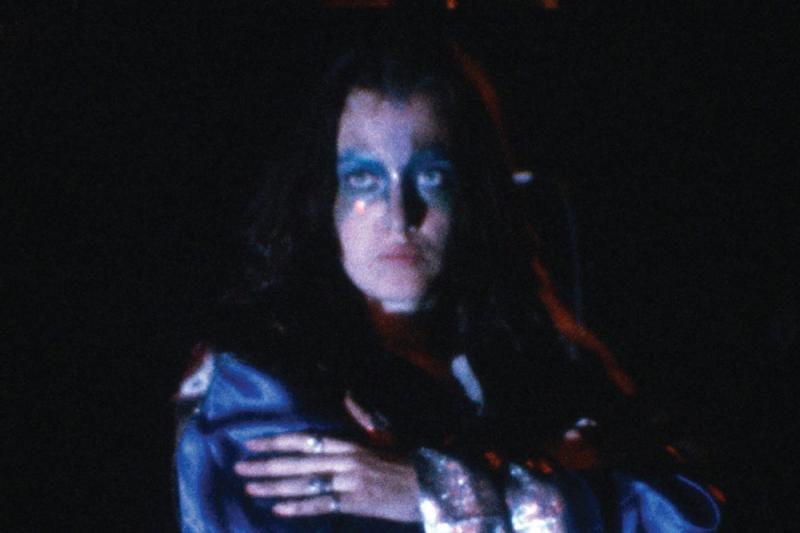
As Britain headed towards the end of 1972, pop fans had fair cause to scratch their heads about a single which first charted in July. In mid-August, Hawkwind’s “Silver Machine” peaked at number three behind Terry Dactyl and the Dinosaurs skiffle-esque “Seaside Shuffle” and, in the top spot, Alice Cooper’s “School’s Out.” Donny Osmond’s oleaginous “Puppy Love” was number four. At 11, David Bowie’s “Starman.”
Glam had kicked in the previous year and, until “Starman,” T.Rex were its torchbearers. Hawkwind did not fit in. They were not easy on the ear or eye. They were not heavy metal or straightforward hard rockers. They represented the freakiest end of British rock, obstinate keepers of a psychedelic flame otherwise largely extinguished elsewhere. Yet here there were, charting with a single.
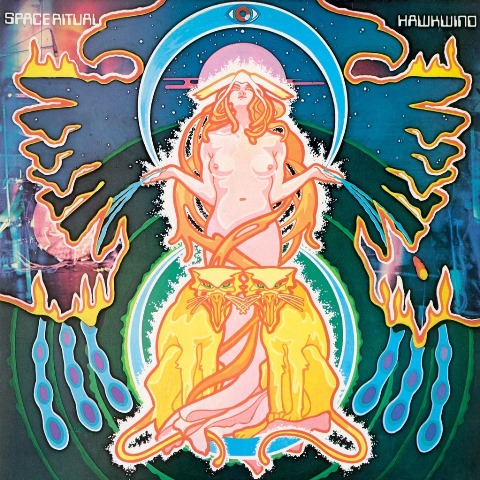 “Silver Machine” was not followed-up in trusted music biz fashion by another hit-seeking single but by the band’s third album, late November’s Doremi Fasol Latido, and an end-of-year tour which was more ambitious than anything else the band had tried before. Hawkwind had played the UK extensively over May to October 1972, but this tour was funded by the money made from the one-off hit single so there was a chance to try something new.
“Silver Machine” was not followed-up in trusted music biz fashion by another hit-seeking single but by the band’s third album, late November’s Doremi Fasol Latido, and an end-of-year tour which was more ambitious than anything else the band had tried before. Hawkwind had played the UK extensively over May to October 1972, but this tour was funded by the money made from the one-off hit single so there was a chance to try something new.
Explaining what was being attempted in NME’s 11 November issue, Nick Kent wrote “unless you're deaf, dumb and blind, or alternatively haven't been keeping up with the music press, you will know that Hawkwind embark this week upon their fabled Space Ritual…a full blown spectacular, around the country.”
Kent noted “the whole concept for the Space Ritual is apparently based around [writer and band member] Robert Calvert's idea of a space ship which loses control, with the songs built around its adventures lost in space. The emphasis is on an adventure rather than a moral thesis. The idea is one the band have been toying with for a year now, beginning as a fantasy which United Artists, their record company, were none too keen to finance. Now that 'Silver Machine' has pointed to their commercial mass appeal, the fantasy has become a reality (complete with all the compromises such a transaction produces) and here they all are, ready to go. The whole spectacle will last roughly two hours…[and] will eventually find their way onto the Space Ritual double album, probably to be recorded live.”
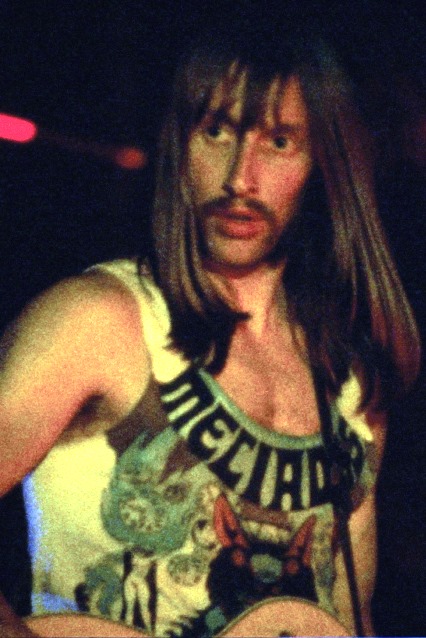 At this point, Kent was ahead of the game as Doremi Fasol Latido wasn’t yet out. Amongst its tracks were "Brainstorm," "Space Is Deep," “Lord of Light," "Down Through the Night" and "Time We Left This World Today." These – the bulk of the album – were played live when Hawkwind toured extensively from 8 November 1972. Initially, fans at the Space Ritual shows did not have the album's recorded versions of the songs as a reference because Doremi... was released on 24 November – after the dates commenced. The tour continued until 30 December 1972, culminating at Brixton’s Sundown, so a fair amount of ticket buyers would nonetheless have had the chance to buy the album by that point. Yet despite the belated arrival of the new album, there was still a raft of material played on the tour which had been created after Doremi... so was totally unfamiliar. Still, after the album’s release, audiences had a way in to some of what they would experience. (pictured left, Hawkwind's Dave Brock, seen during the Space Ritual tour)
At this point, Kent was ahead of the game as Doremi Fasol Latido wasn’t yet out. Amongst its tracks were "Brainstorm," "Space Is Deep," “Lord of Light," "Down Through the Night" and "Time We Left This World Today." These – the bulk of the album – were played live when Hawkwind toured extensively from 8 November 1972. Initially, fans at the Space Ritual shows did not have the album's recorded versions of the songs as a reference because Doremi... was released on 24 November – after the dates commenced. The tour continued until 30 December 1972, culminating at Brixton’s Sundown, so a fair amount of ticket buyers would nonetheless have had the chance to buy the album by that point. Yet despite the belated arrival of the new album, there was still a raft of material played on the tour which had been created after Doremi... so was totally unfamiliar. Still, after the album’s release, audiences had a way in to some of what they would experience. (pictured left, Hawkwind's Dave Brock, seen during the Space Ritual tour)
Accompanied by dancers - including their long-time associate Stacia - and immersive lights, the band on the tour was leader and main songwriter Dave Brock (guitar, vocals), Bob Calvert (poet and, as he was credited, swazzle), Del Dettmar (synthesiser), DikMik (audio generator, electronics), Lemmy (bass, vocals), Simon King (drums) and fellow songwriter Nik Turner (sax, flute, vocals).
The tour duly spawned the double live album. Issued on 11 May 1973, its full title was The Space Ritual Alive In London And Liverpool. It was and is amazing – catching a powerful and unique fusion of psychedelic sensibilities, krautrock-aware relentlessness, science fiction influences, tranciness and an otherness transporting listeners into the heart of the band’s resolute intensity. It was an amalgamation of tracks recorded at Liverpool’s Stadium on 22 December 1972 and Brixton’s Sundown on 30 December 1972 and did not sound as if it was live. Instead it came across as a cogent, unified work which could have been a studio-recorded album. There were the tracks from Doremi Fasol Latido and, as per the live shows, others which were otherwise unheard. On record and on stage, audiences were being challenged by this extravaganza.
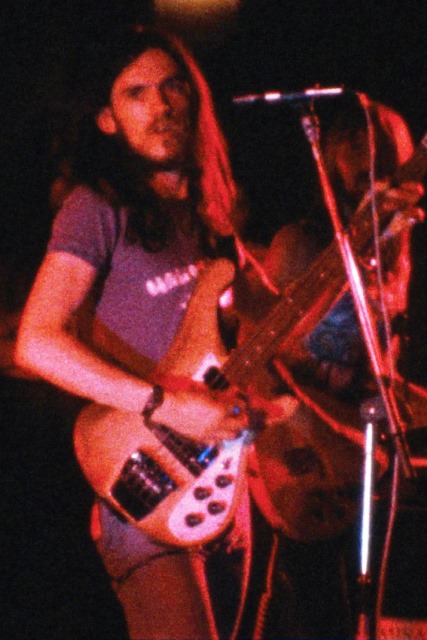 Now, Space Ritual has become a “deluxe” 11-disc box set. Discs One and Two include the original album, newly remastered from the original master tapes. Discs Three to Eight include full shows (each show is on two discs) recorded on 16-track tape at Liverpool Stadium, Sunderland Locarno (23 December 1972) and Brixton Sundown. Discs Nine and Ten showcase a full version of the original double album: what was edited down in 1973 to fit four sides of vinyl. The 11th disc is a Blu-ray of a 5.1 surround-sound mix of the unedited album as per Discs Nine and Ten. Also included is a book. This is the last word on Space Ritual. (pictured right, Hawkwind's Lemmy, seen during the Space Ritual tour)
Now, Space Ritual has become a “deluxe” 11-disc box set. Discs One and Two include the original album, newly remastered from the original master tapes. Discs Three to Eight include full shows (each show is on two discs) recorded on 16-track tape at Liverpool Stadium, Sunderland Locarno (23 December 1972) and Brixton Sundown. Discs Nine and Ten showcase a full version of the original double album: what was edited down in 1973 to fit four sides of vinyl. The 11th disc is a Blu-ray of a 5.1 surround-sound mix of the unedited album as per Discs Nine and Ten. Also included is a book. This is the last word on Space Ritual. (pictured right, Hawkwind's Lemmy, seen during the Space Ritual tour)
Back in 1972, Kent’s fellow NME writer John Pidgeon caught the second Space Ritual date at Dunstable’s Queensway Hall and witnessed what seems to have been akin to a congregation taking part in communion. “The audience, reacting physically to each mood created on stage, became part of the spectacle,” he wrote. “Whenever the stage gave off electronic pulsations, the crowd became uneasy, restless, perturbed; when the characteristic heavy riffs started up the sense of relief was made physically manifest. By the time the band played 'Seven by Seven' most of the seated audience were on their feet with triffid tendril arms swaying above their heads.” Taken as a whole this was, Pidgeon noted, the “combined force of the incredible.”
When the album appeared in May 1973, Kent said in his review that it was “a distillation of their finest characteristics – Brock's riffs repeated and surrounded by amateur but effective electronics. The first number is 'Born to go', and here cleaned up considerably [from its earlier studio recording]. The sound throughout this album is superior to previous efforts, particularly the Doremi album which suffered from a muddy, bleak overall feel. So much so, in fact, that the numbers used from that last album are rejuvenated by the complete improvement in texture. On this album, Hawkwind have achieved the feeling of space, of creating a total environment which has been their vision from the beginning. They're still Britain's best psychedelic band and a great combo to take cerebral depressants to. After Space Ritual, everything else is just horse tranquilliser.”
Obviously Space Ritual was quite something, and it was also quite something that a live album sounded better than Hawkwind’s studio recordings.
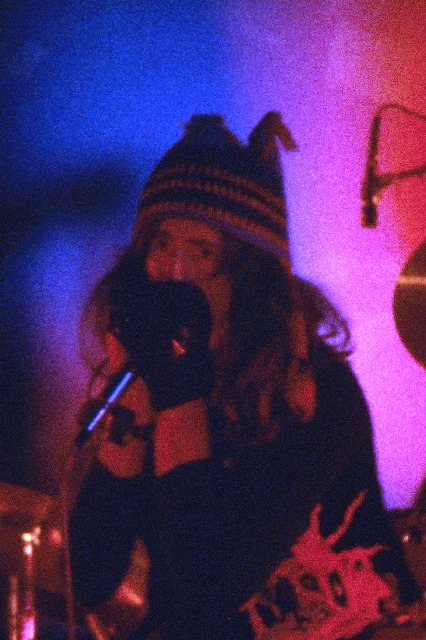 Fast forward 50 years to the box set. Parts of The Liverpool Stadium show had come out in 1985 as a stand-alone release titled Space Ritual Volume 2, but what’s collected here draws from all that was held in record label archives from the Space Ritual live recordings. The complete shows heard on Discs Three to Eight were newly mixed from the 16-track master tapes. The unedited version of the album heard on Discs Nine and Ten is also newly mixed. (pictured left, Hawkwind's Robert Calvert, seen during the Space Ritual tour)
Fast forward 50 years to the box set. Parts of The Liverpool Stadium show had come out in 1985 as a stand-alone release titled Space Ritual Volume 2, but what’s collected here draws from all that was held in record label archives from the Space Ritual live recordings. The complete shows heard on Discs Three to Eight were newly mixed from the 16-track master tapes. The unedited version of the album heard on Discs Nine and Ten is also newly mixed. (pictured left, Hawkwind's Robert Calvert, seen during the Space Ritual tour)
The sound of these revisitations is remarkable – nothing jars and there is no attempt to uncomfortably modernise the sound by, say, bringing up-front the drum tracks. Comparing the original album on Discs One and Two with the newly mixed version of Discs Nine and Ten shows that the new mixes have a slightly greater separation than what was issued in 1973, bringing a greater clarity and presence but without sacrificing any of the band’s power. The electronics are more audible than they were. It is a very sensitive re-rendition of what was familiar. Disappointingly, apart from in passing, the box’s book does not get into the hunt for the multi-track masters, their history, the process which has led to this release and the new studio work which has been undertaken. A baffling oversight.
This set raises the question of whether it’s necessary to hearing everything professionally recorded on the Space Ritual tour. The original double album featured 17 tracks over 87 minutes. Perhaps enough? The unedited version of the album master heard here for the first time is of 18 tracks and runs for 107 minutes: for reasons of space due to what the vinyl could accommodate, “You Shouldn’t Do That” was left off the issued album and a couple of tracks were edited. Although the Liverpool, Sunderland and Brixton shows feature essentially the same set list – “You Shouldn’t Do That” wasn’t recorded at Liverpool; Sunderland has 16 tracks as opposed to Liverpool’s 18 and Sunderland’s 17 – there is a remarkable consistency over each of the three live shows.
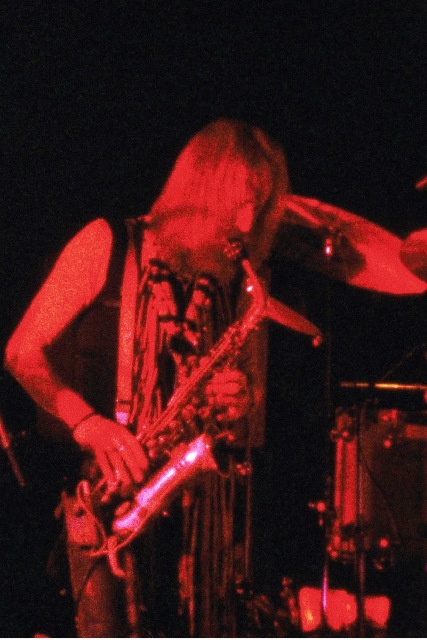 As to whether everything should be heard? Yes. The band was a single-minded yet organic unit. The ebb and flow of each show is different and Sunderland – the one performance not mined for the double album in 1973 – is probably the ultimate Space Ritual recording. Furthermore, any of these three studio-quality live shows could substitute as a replacement for the original double album. This iteration of Hawwind is that good. (pictured left, Hawkwind's Nick Turner, seen during the Space Ritual tour)
As to whether everything should be heard? Yes. The band was a single-minded yet organic unit. The ebb and flow of each show is different and Sunderland – the one performance not mined for the double album in 1973 – is probably the ultimate Space Ritual recording. Furthermore, any of these three studio-quality live shows could substitute as a replacement for the original double album. This iteration of Hawwind is that good. (pictured left, Hawkwind's Nick Turner, seen during the Space Ritual tour)
At all three shows – recorded in, it must be stressed, real time – Hawkwind were tightly drilled. Songs may be shorter or longer in Liverpool, Sunderland or Brixton, yet there is no off-topic improvisation and flabbiness or even – considering these were single, unified performances with no breaks between each piece – evidence of any faltering. Everything heard is to the point. If any of these tracks had been chosen for the double album, nothing would have been deficient.
Some elements stand out as a result of the greater separation which has been brought to bear. Whatever else was going on around him, Dave Brock’s guitar playing is very controlled. Everyone else is hammering away within the enveloping electronic swirl, yet his playing is clipped, meticulous. Even his use of the wah-wah pedal is measured. His levels of concentration must have been immense. Lemmy’s bass playing is driving, but it is now possible to fully hear how melodic it is and also its similarity to the role taken by a rhythm guitar (which he played before joining Hawkwind). The major revelation though is Simon King’s drumming. With the power of heavy rock and with astonishing stamina, he insistently plays with a motorik accuracy. Remarkable.
A box set like this could have been overkill. It is not. Go for the unedited master first then listen, in date order, to Liverpool, Sunderland and Brixton – ensuring that each show is taken in, in full, in one sitting. When he reviewed the original Space Ritual album Nick Kent said Hawkwind had “achieved the feeling of space, of creating a total environment which has been their vision from the beginning.” Now, all of this has been increased to a hitherto unforeseen degree. Devastatingly so. One of the great live albums has become more great. A major release.
- Next week: looking back at 2023
- More reissue reviews on theartsdesk
- Kieron Tyler’s website
Explore topics
Share this article
The future of Arts Journalism
You can stop theartsdesk.com closing!
We urgently need financing to survive. Our fundraising drive has thus far raised £49,000 but we need to reach £100,000 or we will be forced to close. Please contribute here: https://gofund.me/c3f6033d
And if you can forward this information to anyone who might assist, we’d be grateful.

Subscribe to theartsdesk.com
Thank you for continuing to read our work on theartsdesk.com. For unlimited access to every article in its entirety, including our archive of more than 15,000 pieces, we're asking for £5 per month or £40 per year. We feel it's a very good deal, and hope you do too.
To take a subscription now simply click here.
And if you're looking for that extra gift for a friend or family member, why not treat them to a theartsdesk.com gift subscription?
more New music
 Heartbreak and soaring beauty on Chrissie Hynde & Pals' Duets Special
The great Pretender at her most romantic and on the form of her life
Heartbreak and soaring beauty on Chrissie Hynde & Pals' Duets Special
The great Pretender at her most romantic and on the form of her life
 The Last Dinner Party's 'From the Pyre' is as enjoyable as it is over-the-top
Musically sophisticated five-piece ramp up the excesses but remain contagiously pop
The Last Dinner Party's 'From the Pyre' is as enjoyable as it is over-the-top
Musically sophisticated five-piece ramp up the excesses but remain contagiously pop
 Moroccan Gnawa comes to Manhattan with 'Saha Gnawa'
Trance and tradition meet Afrofuturism in Manhattan
Moroccan Gnawa comes to Manhattan with 'Saha Gnawa'
Trance and tradition meet Afrofuturism in Manhattan
 Soulwax’s 'All Systems Are Lying' lays down some tasty yet gritty electro-pop
Belgian dancefloor veterans return to the fray with a dark, pop-orientated sound
Soulwax’s 'All Systems Are Lying' lays down some tasty yet gritty electro-pop
Belgian dancefloor veterans return to the fray with a dark, pop-orientated sound
 Music Reissues Weekly: Marc and the Mambas - Three Black Nights Of Little Black Bites
When Marc Almond took time out from Soft Cell
Music Reissues Weekly: Marc and the Mambas - Three Black Nights Of Little Black Bites
When Marc Almond took time out from Soft Cell
 Album: Mobb Deep - Infinite
A solid tribute to a legendary history
Album: Mobb Deep - Infinite
A solid tribute to a legendary history
 Album: Boz Scaggs - Detour
Smooth and soulful standards from an old pro
Album: Boz Scaggs - Detour
Smooth and soulful standards from an old pro
 Emily A. Sprague realises a Japanese dream on 'Cloud Time'
A set of live improvisations that drift in and out of real beauty
Emily A. Sprague realises a Japanese dream on 'Cloud Time'
A set of live improvisations that drift in and out of real beauty
 Trio Da Kali, Milton Court review - Mali masters make the ancient new
Three supreme musicians from Bamako in transcendent mood
Trio Da Kali, Milton Court review - Mali masters make the ancient new
Three supreme musicians from Bamako in transcendent mood
 Hollie Cook's 'Shy Girl' isn't heavyweight but has a summery reggae lilt
Tropical-tinted downtempo pop that's likeable if uneventful
Hollie Cook's 'Shy Girl' isn't heavyweight but has a summery reggae lilt
Tropical-tinted downtempo pop that's likeable if uneventful
 Pop Will Eat Itself's 'Delete Everything' is noisy but patchy
Despite unlovely production, the Eighties/Nineties unit retain rowdy ebullience
Pop Will Eat Itself's 'Delete Everything' is noisy but patchy
Despite unlovely production, the Eighties/Nineties unit retain rowdy ebullience

Add comment